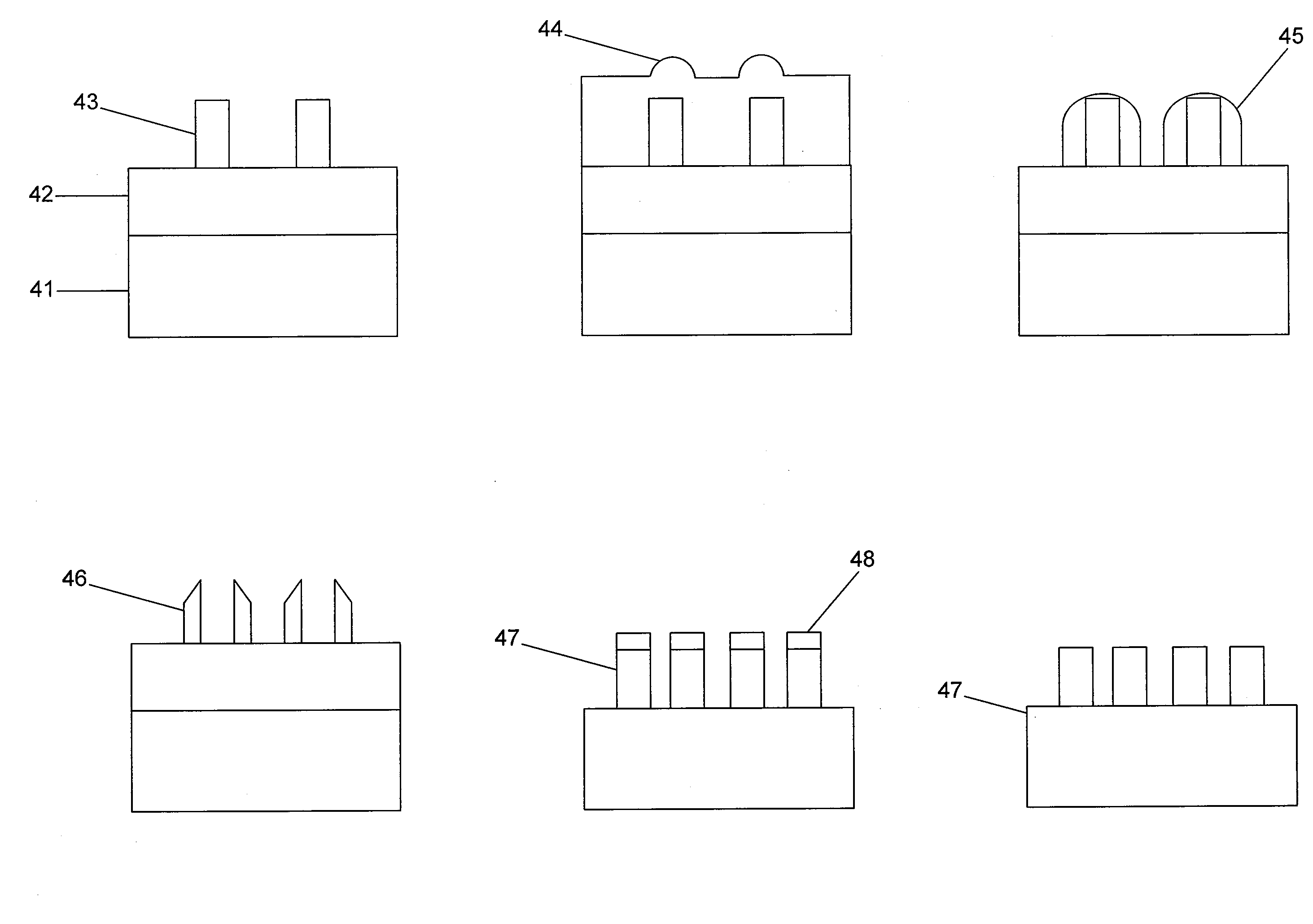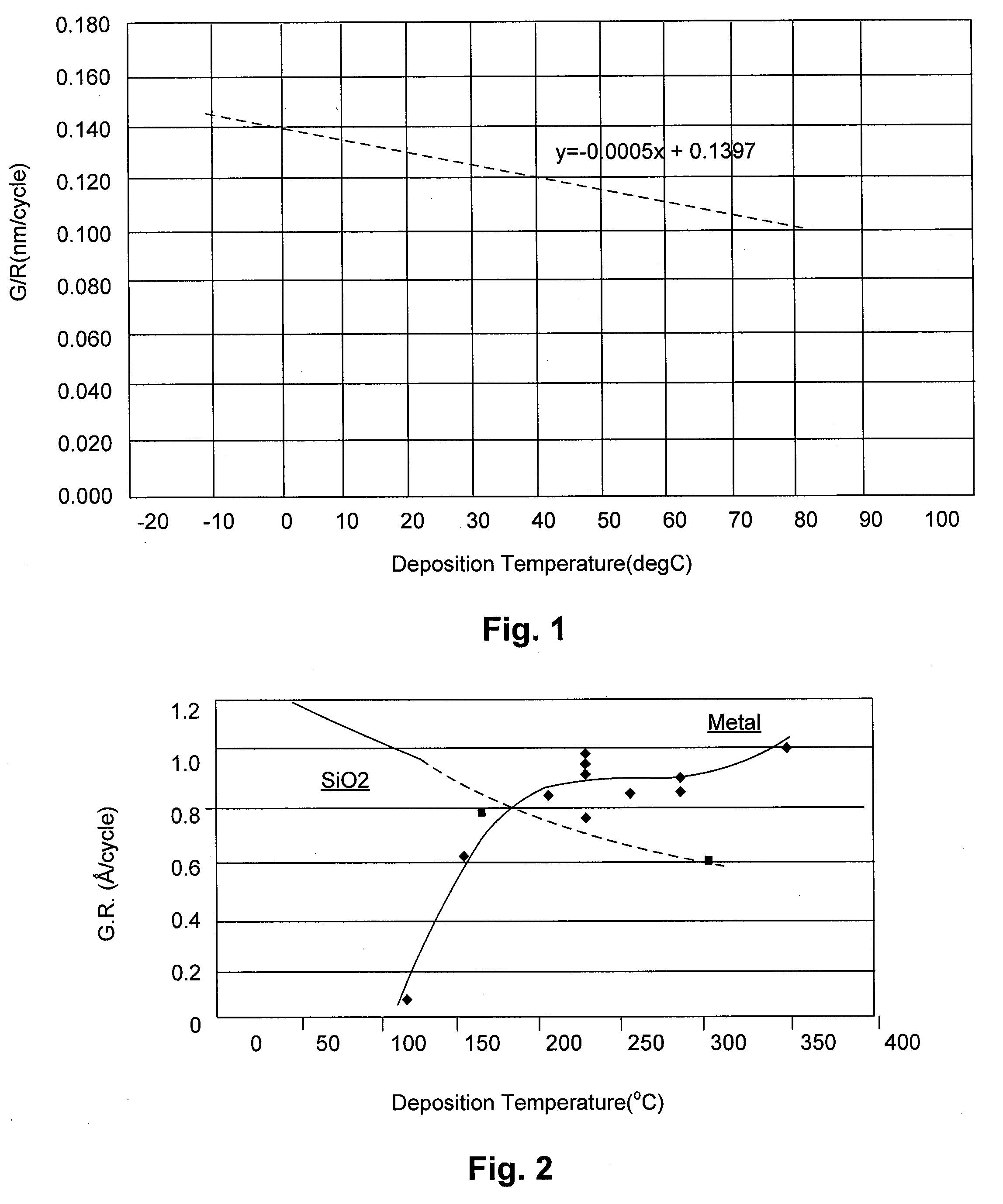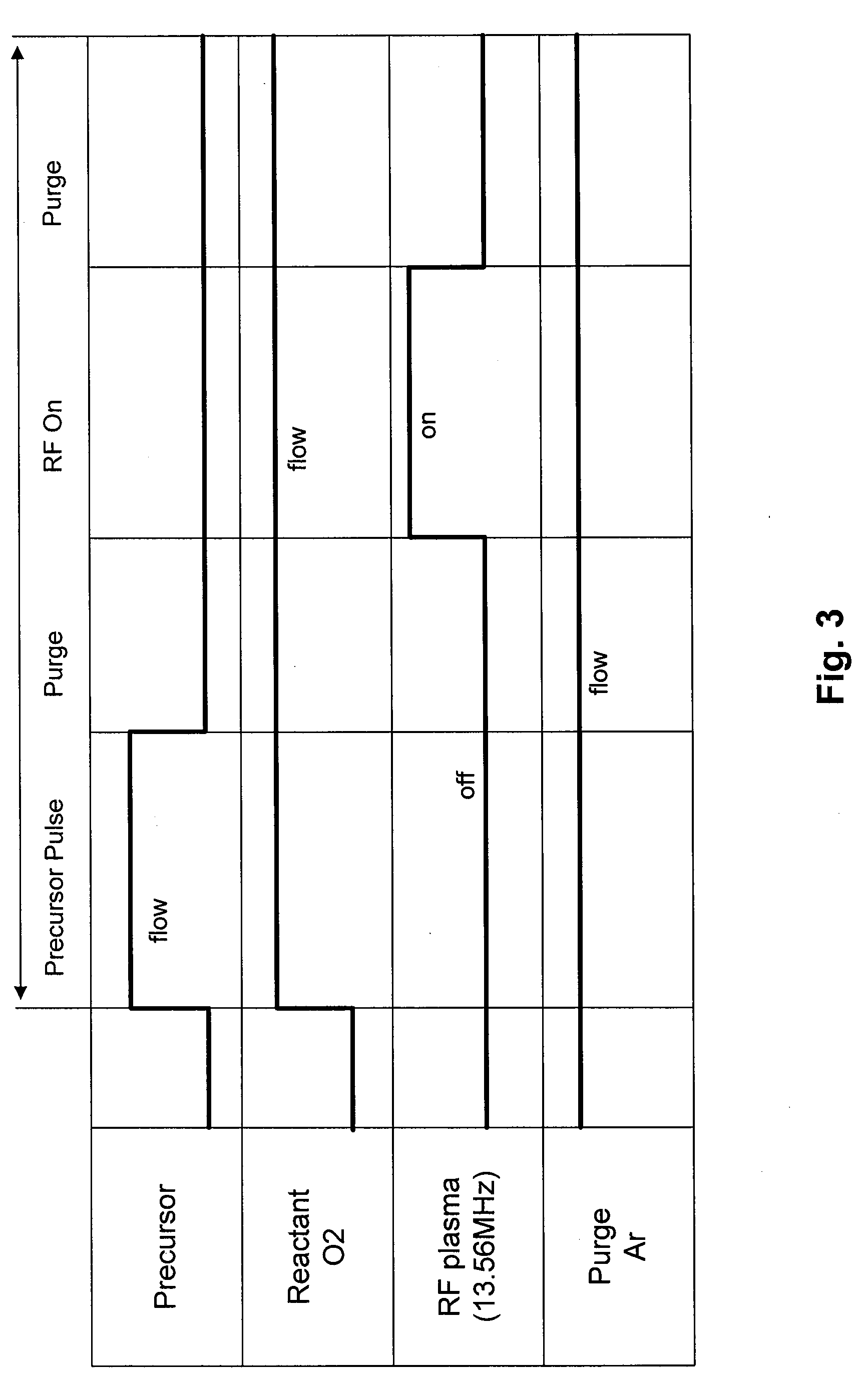Method of Depositing Silicon Oxide Film by Plasma Enhanced Atomic Layer Deposition at Low Temperature
a technology of atomic layer deposition and plasma, which is applied in the field of depositing silicon oxide films by plasma enhanced atomic layer deposition, can solve the problems of inability to achieve temperature stability and repeatability in the process, and difficult temperature control using conventional susceptor heaters, so as to achieve effective inhibition, high film deposition speed, and further reduce the effect of film deposition temperatur
- Summary
- Abstract
- Description
- Claims
- Application Information
AI Technical Summary
Benefits of technology
Problems solved by technology
Method used
Image
Examples
example
[0054]Three types of photoresist A, B and C (line width 40 nm, thickness 120 nm) were formed on substrates, as organic films, where the photoresist films for ArF laser had a structural composition based on an alkyl substitution product of acrylate or methacrylate ester polymer or copolymer, after which a SiO2 film was deposited by PEALD on top. The film deposition conditions were as follows:
[0055]Silicon-containing precursor: BDEAS
[0056]Flow rate of silicon-containing precursor: 500 sccm
[0057]Silicon-containing precursor pulse: 0.5 sec
[0058]Flow rate of oxygen: 600 sccm
[0059]Flow rate of Ar: 1.5 sccm
[0060]RF power (13.56 MHz): 50 W
[0061]RF power pulse: 0.3 sec
[0062]Interval between silicon-containing precursor pulse and RF power pulse (purge before application of RF power): 0.3 sec
[0063]Interval between RF power pulse and silicon-containing precursor pulse (purge after application of RF power): 0.3 sec
[0064]Film deposition pressure: 400 Pa
[0065]Duration of one cycle: 1.5 sec
[0066]As...
PUM
| Property | Measurement | Unit |
|---|---|---|
| temperature | aaaaa | aaaaa |
| temperature | aaaaa | aaaaa |
| temperature | aaaaa | aaaaa |
Abstract
Description
Claims
Application Information
 Login to View More
Login to View More - R&D
- Intellectual Property
- Life Sciences
- Materials
- Tech Scout
- Unparalleled Data Quality
- Higher Quality Content
- 60% Fewer Hallucinations
Browse by: Latest US Patents, China's latest patents, Technical Efficacy Thesaurus, Application Domain, Technology Topic, Popular Technical Reports.
© 2025 PatSnap. All rights reserved.Legal|Privacy policy|Modern Slavery Act Transparency Statement|Sitemap|About US| Contact US: help@patsnap.com



